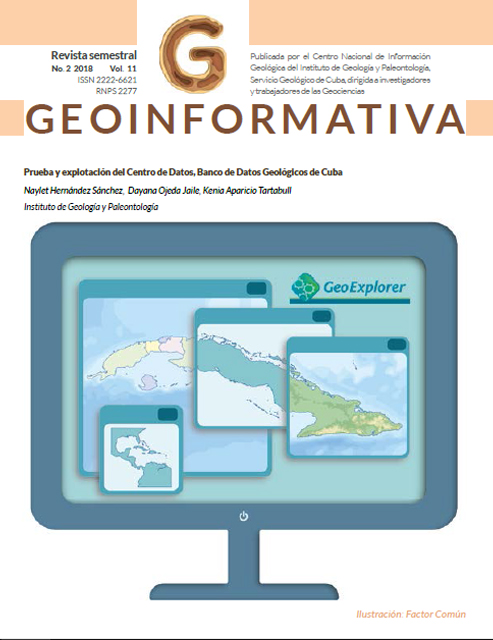THE CAVES OF PAREDENES AND THE TUNNEL AND THE CAVE OF PÍO DOMINGO: MAIN FOSSILIFEROUS DEPOSITS OF VERTEBRATES OF THE PLEISTOCENE IN WESTERN CUBA
Main Article Content
Abstract
The biggest findings of Quaternary vertebrate fossils at the Cuban archipelago had taken place in karst landforms, more frequently in caves and sinkholes. Among the caves, are distinguished cueva de Paredones, at Ceiba del Agua, Caimito municipality, Artemisa province; cueva del Túnel, at La Salud, Quivicán municipality, Mayabeque province; and Gran Caverna de Pio Domingo, in Sumidero, Minas de Matahambre municipality, Pinar del Río province. Those caves, together with Lamas cave (almost demolished) at Santa Fe, NW of La Habana, and cueva de Los Indios, at Daiquirí, Santiago de Cuba province, are the fossil deposits with the greatest number of species recognized in the Cuban paleontological studies. Although the systematics of terrestrial mammals of Cuba has undergone an important review from which a number of species and genera have been declared in synonymy, the caverns (cavities) listed in here remain the most important type localities: Cueva de Paredones (High Walls Cave), Cueva del Túnel (Tunnel Cave) and Pio Domingo Cavern. In all these deposits, very important to the paleontology of Quaternary, had been identified many other species and individuals of birds, sloths, rodents, insectivores, reptiles and bats.
Article Details

This work is licensed under a Creative Commons Attribution-NonCommercial-ShareAlike 4.0 International License.
Those authors who have publications with this journal accept the following terms of the License Attribution-NonCommercial 4.0 International (CC BY-NC 4.0):
You are free to:
- Share — copy and redistribute the material in any medium or format
- Adapt — remix, transform, and build upon the material
The licensor cannot revoke these freedoms as long as you follow the license terms.
Under the following terms:
- Attribution — You must give appropriate credit, provide a link to the license, and indicate if changes were made. You may do so in any reasonable manner, but not in any way that suggests the licensor endorses you or your use.
- NonCommercial — You may not use the material for commercial purposes.
- No additional restrictions — You may not apply legal terms or technological measures that legally restrict others from doing anything the license permits.
The journal is not responsible for the opinions and concepts expressed in the works, they are the sole responsibility of the authors. The Editor, with the assistance of the Editorial Committee, reserves the right to suggest or request advisable or necessary modifications. They are accepted to publish original scientific papers, research results of interest that have not been published or sent to another journal for the same purpose.
The mention of trademarks of equipment, instruments or specific materials is for identification purposes, and there is no promotional commitment in relation to them, neither by the authors nor by the publisher.
